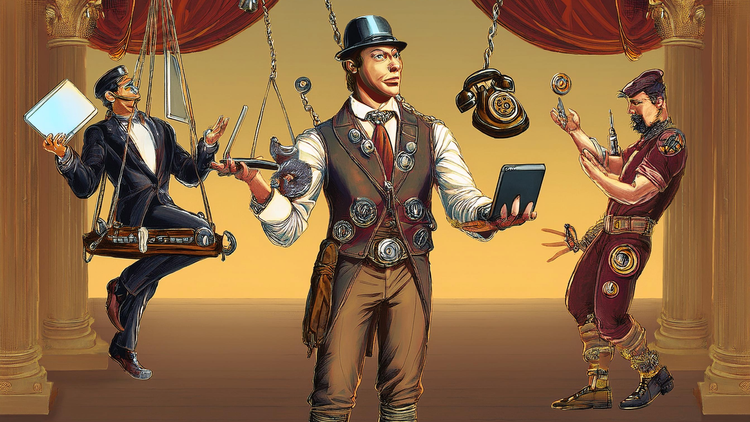Tendering

Undertaking a tender process, either as a supplier or contractor, is an exciting business activity. We do not always talk about how business can be exciting, however attempting to either land a business contract, or indeed obtaining the best possible contractor can be highly fulfilling.
At the start of my career, I contributed to PricewaterhouseCooper's Best Value Guide. Best Value was a concept utilised by Local Government and wider Government agencies to put work out. It was a change from its predecessor Compulsory Competitive Tendering (CCT) which was condemned for taking the lowest possible price over quality of service.
For me, this has always been a moot point as quite simply the success of any competitive tender lies with the quality of tender documentation and more specifically with the quality of responses from requests for information (RFIs).
This is obviously only if the tender itself is required.
I have been fortunate enough to both help implement a framework for putting tenders out and conversely bid for tenders themselves.
Tendering for public sector projects in the UK is a meticulous and structured process. It ensures transparency, fairness, and competitiveness, adhering to strict regulations.
A basic tender process follows the following steps:
- Pre-Qualification Questionnaire (PQQ)
The process often begins with the Pre-Qualification Questionnaire (PQQ). This initial stage screens potential suppliers to determine if they have the necessary capability and financial stability to undertake the project. The PQQ assesses:
- Company background: Including structure, history, and key personnel.
- Financial standing: Financial reports, credit ratings, and turnover.
- Technical capability: Previous experience, certifications, and capacity.
- Compliance: Adherence to relevant laws, including health and safety, and equality.
- Invitation to Tender (ITT)
Once pre-qualified, suppliers receive an Invitation to Tender (ITT). This document is critical as it details the project's scope and the requirements for the tender response. The ITT typically includes:
- Project specifications: Detailed descriptions of the goods, services, or works required.
- Conditions of contract: Legal terms and conditions under which the contract will be executed.
- Evaluation criteria: How the tender submissions will be assessed.
- Submission instructions: Deadlines, format, and method of submission.
Each tender has some core elements:
- Executive Summary
This section provides a concise overview of the tender response. It highlights the bidder’s understanding of the project, their approach, and key selling points.
- Technical Proposal
The technical proposal demonstrates the bidder’s approach to delivering the project. It includes:
- Methodology: Detailed plan on how the work will be carried out.
- Project management: Schedule, milestones, and deliverables.
- Quality assurance: Processes to ensure high standards and compliance with specifications.
- Risk management: Identification and mitigation of potential risks.
- Financial Proposal
The financial proposal outlines the cost of delivering the project. It should be transparent and comprehensive, covering:
- Detailed breakdown of costs: Itemised pricing for all aspects of the project.
- Payment schedule: Proposed timeline for payments.
- Value for money: Justification of costs, demonstrating efficiency and cost-effectiveness.
- Supporting Information
This section includes additional documents to support the tender response, such as:
- CVs of key personnel: Qualifications and experience of the team members.
- Case studies: Examples of similar projects successfully completed.
- References: Testimonials from previous clients.
When considering competitive tenders there are a variety of aspects to consider:
Compliance with Regulations
Public sector tenders must comply with regulations such as the Public Contracts Regulations 2015, ensuring fairness and transparency. This includes adhering to the stipulated timelines, using prescribed forms and templates, and following the prescribed procurement procedures.
This may not be applicable to wider businesses, however it is a very good discipline to introduce.
Clear and Concise Communication
The tender documentation must be clear, concise, and free of jargon. This ensures that evaluators can easily understand and assess the submission.
For me, this is critical. I have found that too often, business consultants and executives revert to business school jargon. Keyboard warriors rarely seem to understand or care about the needs of the end user.
Attention to Detail
Attention to detail is critical. Errors or omissions can lead to disqualification. Ensure that all required documents are included and that the submission is complete and accurate.
Demonstrating Value for Money
Public sector projects prioritise value for money. Tender responses should highlight how the bidder provides the best combination of quality and cost-effectiveness.
Collaboration and Feedback
Engage with stakeholders throughout the tender process. This can involve clarifying requirements, seeking feedback on draft proposals, and ensuring alignment with project objectives.
This is fundamental, as once the project starts the relationship become tangible.
Delivering tender documentation for public sector projects in the UK is a detailed process that requires careful preparation, adherence to regulations, and a clear demonstration of capability and value for money. By understanding the core elements and key considerations, bidders can enhance their chances of success in securing public sector contracts.
It is at this point that you must ensure you have included the use of AI in any projects. Have you confirmed data security? Have you clarified how technology and most importantly which tools will deliver the project? Have your legal team understood and made allowances for AI in the contract documentation?





